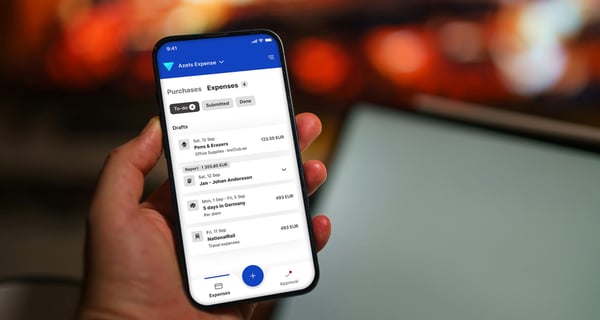

Tracking and submitting expenses is one of the biggest administrative headaches that employees face. So it’s no surprise that we’re seeing an emergence of new tools and technologies aimed at addressing this pain point and removing tedious manual tasks from the process. But what makes a good expense management solution?
As you’re choosing the right expense management software for your business, here are five considerations to keep top of mind.
1. Seamless reporting capabilities
The traditional approach for reporting an expense goes something like this: you make a purchase, get your receipt and save it, track the payment on an expense report, submit the report with a copy of the receipt. Sounds tedious, no?
To make expense reporting as frictionless as possible, expense management systems should be equipped with the following:
- Automated reporting through a quick scan or photo of the receipt. This simplifies the process for employees and reduces the chance of human error or late reports.
- A centralised platform that shows purchases, expense categories, the remaining balance, per diem allowances, mileage, and more.
- Multi-currency functionalities that automatically convert out-of-country purchases into the right currency.
- Mobile compatibility where the application works with the employee’s device in order to scan and process the receipt – and people can track expenses on-the-go.
2. Credit card integration
Oftentimes, companies will equip their employees with a corporate credit card to use for business-related purchases – but these can be a challenge for accounting teams to reconcile when tracking expenses.
The alternative is to use an expense management solution that’s integrated with the individual's credit card – which can automatically match transactions and expenses, removing the manual steps. This way, finance teams get real-time insight into where the spend is happening, without having to rely on manual expense reports.
3. Simple, customisable approvals
Reviewing and approving expense reports is another taxing element of the expense management process. With a centralised and unified system, approvers can evaluate and validate (or reject) reports in a matter of seconds – with just a few clicks. In instances where there are multiple reviewers, a modern expense management system will feature an approval hierarchy that automatically moves the report through the workflow. It will also allow for customisation, so individuals can configure multiple approval levels and approvers (and delegates) as needed.
4. Automated compliance features
Accounting regulations and region-specific corporate rules are hard to keep track of at the best of times – and putting the onus on employees to remember these elements doesn’t set anyone up for success.
A comprehensive expense management system should be dynamic, automatically taking into account any localisation considerations like taxes, per diems, and other relevant allowances. This makes it easy for companies to enable their employees to report expenses from wherever they are, across multiple countries on a regular basis.
5. Extensive compatibility
As companies become more digitally enabled, they need systems that talk to each other. At the end of the day, if a company’s technologies operate in silos, they have a harder time enabling efficiencies.
For expense management, the system should integrate seamlessly with the relevant accounting software, ERP systems, and client billing technologies. This way, leaders can review expenses within the right contexts and use those insights to make informed decisions.
Finding a solution that addresses all of these criterias is a must for companies looking to simplify expense reporting. The biggest bonus? Your employees and contractors will thank you – and that’s priceless.
Looking for an expense management solution that covers all five of those bases? Get in touch with us today.



